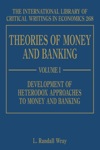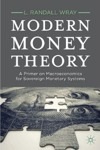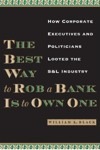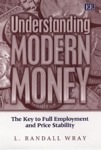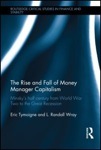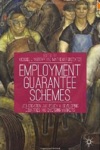Bank Whistleblowers United
Posts Related to BWU
Recommended Reading
Subscribe
Articles Written By
Categories
Archives
November 2025 M T W T F S S 1 2 3 4 5 6 7 8 9 10 11 12 13 14 15 16 17 18 19 20 21 22 23 24 25 26 27 28 29 30 Blogroll
- 3Spoken
- Angry Bear
- Bill Mitchell – billy blog
- Corrente
- Counterpunch: Tells the Facts, Names the Names
- Credit Writedowns
- Dollar Monopoly
- Econbrowser
- Economix
- Felix Salmon
- heteconomist.com
- interfluidity
- It's the People's Money
- Michael Hudson
- Mike Norman Economics
- Mish's Global Economic Trend Analysis
- MMT Bulgaria
- MMT In Canada
- Modern Money Mechanics
- Naked Capitalism
- Nouriel Roubini's Global EconoMonitor
- Paul Kedrosky's Infectious Greed
- Paul Krugman
- rete mmt
- The Big Picture
- The Center of the Universe
- The Future of Finance
- Un Cafelito a las Once
- Winterspeak
Resources
Useful Links
- Bureau of Economic Analysis
- Center on Budget and Policy Priorities
- Central Bank Research Hub, BIS
- Economic Indicators Calendar
- FedViews
- Financial Market Indices
- Fiscal Sustainability Teach-In
- FRASER
- How Economic Inequality Harms Societies
- International Post Keynesian Conference
- Izabella Kaminska @ FT Alphaville
- NBER Information on Recessions and Recoveries
- NBER: Economic Indicators and Releases
- Recovery.gov
- The Centre of Full Employment and Equity
- The Congressional Budget Office
- The Global Macro Edge
- USA Spending
-
Yearly Archives: 2012
Warren Mosler: Because We Think We Can Be the Next Greece, We’re Turning Ourselves Into the Next Japan
Comments Off on Warren Mosler: Because We Think We Can Be the Next Greece, We’re Turning Ourselves Into the Next Japan
Posted in MMT, Modern Monetary Theory, modern money theory, Uncategorized, warren mosler
Tagged warren mosler
Why MMT is Like an Autostereogram
By Isabella Kaminska
(Cross-posted from FT Alphaville)
We’ve discussed MMT’s recent foray into the mainstream, and the confusion it has consequently courted.
But that’s the funny thing about the theory. It is naturally divisive because most of the time it fails to communicate its message succinctly. Which is weird, since the premise is actually fairly simple to understand. We’d say it’s akin to looking at an autostereogram. Once you get it, you never see things quite the same way again. But at the same time, try as they might, some people will never be able to see the image. Ever.
And it all rests on one key fact (at least as far as we can tell!) . Rather than treating money as an object of wealth or somebody else’s debt, a means to trade … MMT treats money as a claim on wealth, a product of trade.
This one view makes all the difference. Unlike the first viewpoint, which assumes that debt and money came out of trade, MMT believes debt, or more specifically monetary credit, pre-dates trade. Coinage and all forms of monetary token are thus just a physical representation of what is actually an innate credit system. In and of itself, money — the token — has no value. And this is largely why a fiat monetary system can work. The monetary unit doesn’t need to be a ‘valuable’ piece of metal. It’s who guarantees the token that matters. In modern times, that means the state.
What’s more, suppress the credit system (which in the case of the United States is represented by the government’s debt) and inevitably you suppress an economy’s ability to trade. And this, by the way, is why MMTers believe government debt can never really constrain an economy whose government controls the official currency. Furthermore, this is also why in a time of crisis they believe you need moregovernment guarantees, not less — hence their support of higher debt limits.
If one chart sums up the theory best we think it’s this one from Stephanie Kelton:
What the chart demonstrates beautifully is the symmetry that applies to the balances of a centrally controlled credit system.
That’s to say, for the US domestic private sector to carry a positive balance, the government must in effect carry a negative balance.
This makes a lot of sense if you think of the United States as representing a completely self-contained credit system, where only one official government controlled currency is allowed (and no foreigners can buy US debt). If the economy is to be kept well lubricated and functioning, the government must be willing to take on more debt on behalf of its citizens when the situation calls for it. Think of it as the private sector positve balances (or savings) representing claims on goods and services which haven’t as yet been redeemed. If not for the government’s negative balance, these claims would be represented by billions of private negative balances instead — representations of debts/credits between individuals. Money earned, and taxed, but not yet redeemed. Everything from your right to redeem a dozen baked rolls from your baker one day in the future, to your right to claim 10 days worth of medical services from your local doctor.
Allowing the government to take on those debts/credits (and really we’re talking more about credits) in place of your counterparties allows for claim standardisation. This not only ensures claims can be redeemed more quickly, having a greater wealth effect on the economy, they can also penetrate the system more completely. Furthermore, they are given a state guarantee in place of a private guarantee.
No more is there a risk that the doctor’s services you earned (by fixing the boiler at the medical centre) are lost because the doctor in question has passed away. You will still be able to redeem the services due to the intermediary role played by the government. Your claim is now against the government, not the doctor. You can thus redeem it with anyone who feels inclined to settle transactions with government paper instead of private paper. And why wouldn’t they? Everyone, after all, has a use for official government currency since it’s the only payment unit which will be accepted for the settlement of tax bills — a.k.a the government’s redemption of the claims it has against you.
In a way, the government, via its debt issuance and willingness to take on negative balances, acts as the ultimate central counterparty, clearer and intermediary to the trillions of transactions and trades that take place in its economy every day. The system’s claims against counterparties (of lesser credit quality than the government) are transformed via the financial framework into claims against the state. This is achieved either by convincing those with positive claim balances into signing them over to the state (via debt auctions) or by having the government “spend” on services directly, creating entirely new claims in the process that then circulate through the system.
Taxes, meanwhile, reflect the government’s own ability to redeem the claims it holds against you, generated in the first place by spending on your behalf.
The budget surplus issue
Of course, if the government runs a budget surplus, and receives more tax receipts than it spends — things can get tricky. Some believe surpluses are actually the equivalent of eating away at the stock of wealth in the system. That’s to say, worse than mere monetary tightening.
That’s largely because there are limits to what the government can do with the surpluses. For example, it can use them to pay down existing government debt (by buying back securities), or to borrow less in the new budget year. Alternatively it can offer more tax cuts, or deploy the surpluses into foreign or private investment securities (a la China).
This, though, is dangerous territory for an economy which is already suffering from ashortage of safe assets already (safe stores of value). That is to say, an economy which has generated more claims than it is currently prepared to redeem.
John Carney at CNBC’s Net Net, for example, has explained the problem as follows :
More importantly, even when it isn’t wasted on stupid government projects, the surplus itself is a waste. If it bothers you that the government spends tax money on bridges to nowhere, you should apoplectic when the government takes tax money and spends it on nothing at all. That, of course, is exactly what happens when our federal government taxes more than it spends. The financial assets of the people are simply confiscated.
But more to the point, if the government runs a surplus, it stands to reason that the private sector has to take on a negative balance in exchange, (see Kelton’s chart once again).
Though, if non-domestic claims against the government enter the frame things get even more complicated still. The debt which was originally intended to help mediate the credit transactions of its own citizens is sucked out of the system entirely, forcing the private sector to mediate transactions with non-government securities (and thus more risky guarantees) instead.
The more demand there is for US government securities from abroad, especially in an environment where the government is not willing to generate additional debt, the more the private sector’s negative balance is forced to rise to compensate.
This, by the way, is a situation we are now arguably seeing in Australia.
The MMT response, of course, would be simple. Issue more government debt and let the government take the negative balance, not the private sector.
That’s not to say, however, that there is never a constraint to debt.
It is possible that the state ends up guaranteeing many more claims than are actually possible to redeem — like with our doctor’s example above, because the counterparties who issued the credits are no longer around to make good on them. In that sense a fair share of the claims circulating through the system routinely represent a surplus. As that share rises, the purchasing power of active claims is reduced, since there are more claims than available redemption options. This will naturally be inflationary, and calls for the government to limit the amount of credit stock in the system, which can be achieved by taxation.
So the question is, which situation are we in now? One where there are more claims than redemption options (capacity to satisfy claims) — thus the rush for safe stores of value, of which there are not enough to guarantee everyone’s claims — or one where there is enough capacity to match claims, but not enough government credit to lubricate the system?
Hard to say, really (presuming you buy the MMT view in the first place).
Posted in MMT, Modern Monetary Theory, modern money theory, Stephanie Kelton, Uncategorized
Tagged FT alphaville, MMT, Stephanie Kelton
The Amazing Vanishing Act: Accounting Control Fraud Disappears from the Regulatory Lexicon
Criminologists know that accounting control fraud causes greater financial losses than all other forms of property crime – combined. Some of the world’s best economists, George Akerlof and Paul Romer, praised the S&L regulators’ early recognition of these frauds and set out a formal economic theory of accounting control fraud (“Looting: the Economic Underworld of Bankruptcy for Profit”). They ended their 1993 article with this paragraph, in order to emphasize its importance.
“Neither the public nor economists foresaw that [S&L deregulation was] bound to produce looting. Nor, unaware of the concept, could they have known how serious it would be. Thus the regulators in the field who understood what was happening from the beginning found lukewarm support, at best, for their cause. Now we know better. If we learn from experience, history need not repeat itself.”
The primary reasons that accounting control fraud can produce catastrophic losses are the seeming legitimacy of the firm, the supreme status and respectability of the CEO leading the fraud, the fact that accounting control fraud is a “sure thing” (Akerlof & Romer 1993), the ability of control fraud to hyper-inflate bubbles, allowing the fraud to persist for years and magnify losses, and the paradox that the optimal means for a fraudulent CEO to loot “his” bank is to cause the bank to make exceptionally bad loans.
The last element is so counter-intuitive that despite the accounting control frauds’ dominant role in driving the S&L debacle and the Enron-era accounting control frauds many people cannot really believe that elite CEOs would loot “their” banks despite the many felony convictions of the elite CEOs that drove the two predecessor crises.
“Benjamin Wagner, a U.S. Attorney who is actively prosecuting mortgage fraud cases in Sacramento, Calif., points out that banks lose money when a loan turns out to be fraudulent. “It doesn’t make any sense to me that they would be deliberately defrauding themselves,” Wagner said.”
Wagner is so befuddled that he thinks that he cannot keep his pronouns straight in the same sentence. “They” is the fraudulent CEO. The fraudulent CEO loots “his” bank. The bank is “themselves” in Wagner’s bewildered sentence. The CEO is not looting himself when he loots the bank. Wagner is so confused that he assumes away the existence of insider fraud. Sacramento is one of the epicenters of mortgage fraud by some of the largest accounting control frauds, and it is no surprise that they have been able to commit their frauds with impunity.
The national commission that investigated the causes of the S&L debacle found:
“The typical large failure [grew] at an extremely rapid rate, achieving high concentrations of assets in risky ventures…. [E]very accounting trick available was used…. Evidence of fraud was invariably present as was the ability of the operators to “milk” the organization” (NCFIRRE 1993).
The fraud “recipe” for a lender engaged in accounting control fraud has four ingredients:
- Grow like crazy by
- Making bad loans at a premium yield while
- Employing extreme leverage, and
- Providing grossly inadequate allowances for loan and lease losses (ALLL)
Understanding the second element is essential to effective financial regulation and prosecution. Requiring sound underwriting is the best, no cost means of preventing the worst bank frauds. Making enormous numbers of bad loans requires fraudulent banks to suborn internal controls and underwriting. The bank operates in a manner that makes no sense for an honest lender. (See my earlier writings on “adverse selection” and the resultant “negative expected value.”) Understanding why the recipe is a “sure thing” (the bank will report superb, albeit fictional, income and the controlling officers will, promptly, be made wealthy) is essential to effective regulation because the regulator must treat the fiction as real.
If there was one agency that should have understood the fraud recipe, it was the Office of Thrift Supervision (OTS). The Federal Home Loan Bank Board (OTS’ predecessor) first identified it, wrote about it, trained its staff, trained the FBI and the Justice Department, and used our understanding of the recipe to identify, close, sue, sanction, and convict the frauds.
By August 1983, the Bank Board had detailed written examination manuals that explained much of the accounting control fraud dynamic.
Regulatory Concerns
In summary, incentives to report higher earnings, the nature of assumptions used in certain transactions, like securitizations, and improper reporting in general may affect reported earnings. Examiners should be alert to the regulatory concerns cited throughout this section, and to the following additional regulatory concerns as well:
• Management may use gains to further leverage the balance sheet. You should consider the quality of capital supporting asset growth to the extent that management based gains on optimistic assumptions or that the value of the retained interest is highly sensitive to accelerating prepayments or declining asset quality.
• Management compensation or dividend payouts may be excessive, and dependent on earnings. Associations often tie compensation and dividends to reported profits. To the extent that reported profits are overstated, these payouts can dissipate assets and capital.
• Management may ignore credit quality. The incentive for profits can override attention to quality of earnings. The potentially significant profit that management can generate by gain-on sale accounting creates a strong incentive to produce originations, often with little attention to credit quality.
Remember, this was written nearly 30 years ago. We have known for a very long time that modern executive compensation plus deregulation created an intensely criminogenic environment that could lead bank CEOs leading accounting control frauds to make epic amounts of bad loans in order to optimize fictional reported income and the CEO’s compensation.
Unfortunately, OTS retreated to the dark ages as it came under the sway of anti-regulators influenced by theoclassical economists who were ignorant of the criminology, regulatory, and economics literature about control fraud. These economists were unaware of how central underwriting is to lenders’ success.
Clinton administration economists “knew” that a lender would never deliberately make a bad loan. They knew that accounting control fraud did not exist – even though it had so recently devastated the S&L industry. The June 20, 2000 HUD/Treasury report on lending abuses made explicit this claim, which ignored Akerlof & Romer, criminologists, and OTS’s (a bureau of Treasury) contrary findings,.
“In most respects, lending in the subprime mortgage market follows the same principles as lending in other markets. Basic economic theory, not to mention common sense, tells us that a lender will only lend money to a borrower if the lender expects to be repaid. That repayment has two components: the return of the original amount lent (the principal), and compensation for the opportunity cost of lending the money and for taking the risk that the loan is not repaid as promised (the interest rate charged). While a lender will not make a loan unless he or she expects to be repaid, clearly not all borrowers present a lender with the same risk of default.”
On January 17, 1996, OTS’ Notice of Proposed Rulemaking proposed to eliminate its rule requiring effective underwriting on the grounds that such rules were peripheral to bank safety.
“The OTS believes that regulations should be reserved for core safety and soundness requirements. Details on prudent operating practices should be relegated to guidance.
Otherwise, regulated entities can find themselves unable to respond to market innovations because they are trapped in a rigid regulatory framework developed in accordance with conditions prevailing at an earlier time.”
This passage is delusional. Underwriting is the core function of a mortgage lender. Not underwriting mortgage loans is not an “innovation” – it is a “marker” of accounting control fraud. The OTS press release dismissed the agency’s most important and useful rule as an archaic relic of a failed philosophy.
“By getting away from ‘cookie cutter’ and ‘one size fits all’ regulations, we’re giving thrifts more flexibility to tailor their operations to better meet the needs of their customers,” said John Downey, executive director, Supervision. “Enhancing flexibility and reducing paperwork will hopefully make the lending process easier for both savings institutions and their customers,” he noted.
“We believe we can simplify our rules and give thrift management more flexibility without jeopardizing the safety and soundness of thrifts’ lending and investing operations,” said Carolyn Buck, OTS chief counsel. “We are eliminating numerous picky details from the regulations, while leaving fundamental safety and soundness constraints in place,” she said.
The OTS underwriting rules imposed the minimum, not the optimal, underwriting processes that a prudent lender would follow. It imposed no costs on honest lenders. Any prudent lender should have done considerably more than was required under the rules.
OTS was not unique. The Clinton administration was in thrall to the “Reinventing Government” movement, which asserted that government was largely a failure and needed to be radically altered to embrace purportedly superior private sector practices. Vice President Gore’s passion was pushing the reinvention of government. (Then Texas Governor Bush was shared Gore’s passion.) The scholars pushing reinvention claimed that their approach would invigorate regulation. Their assumption was that CEOs were good people who wanted to do the right thing but were driven to despair and rebellion against bureaucratic restrictions that prevented them from doing the right thing and demonized them as bad guys. The scholars wanted dramatically reduced regulation, regulations devised with the active participation of industry partners, greatly increased privatization, far less enforcement and fewer sanctions (which were said to only build a climate of business resistance), and a service mentality for the regulators (we were ordered to refer to the S&L as our “clients” and directed to always think of them as clients).
The Clinton administration thought so little of the OTS that he left an economist in charge of it on an “acting” basis for many years. The economist was not evil, but he inherited an industry that had been scoured of its control frauds and an economy that had swung into recession. The Clinton administration wanted vastly less regulation of lenders and OTS Acting Director Fiechter was happy to deliver an anti-regulatory policy that he substantively supported.
“In summary, after the lifting of statutory requirements for mortgage loans in 1982, regulatory requirements were lifted as well. The federal regulators relied on bank management to ensure sound operations, and on consumers to protect themselves against abusive loan practices [p. 161].
Regulators expected that market-based decisions would lead to innovative loan products, which would maximize availability of credit and which practices. Lender self-interest, bounded by the legal mandate of “safety and soundness,” was relied upon to ensure safe offerings. Consumer self-interest was also relied upon to weed out unsafe products and practices [p. 163, footnotes omitted].”
Di Lorenzo, Vincent, “Unsafe Loans in a Deregulated U.S. Mortgage Market” (2009). Pace Law Review. Paper 633.
Di Lorenzo misses the period in which OTS and its predecessor agency the Federal Home Loan Bank Board, rejection of this theoclassical dogma allowed us to prevent the debacle from becoming a national financial crisis and allowed us to prosecute the elite frauds. He is, however, certainly correct about the overall triumph of theoclassical dogma (and the Reinventing Government movement, which he does not discuss).
The single most destructive deregulatory act, ironically, was contemporaneous with Akerlof and Romer’s hopeful conclusion in 1993: “now we know better” – and can use that knowledge to prevent future crises. The 1993 deregulation was “bound to produce looting,” which demonstrated that economists never “knew better” and our successors as regulatory leaders no longer “knew better.” In 1993, the federal financial regulatory agencies adopted an interagency rule junking their loan underwriting rules and substituting deliberately unenforceable guidelines. This is the rule change that allowed fraudulent liar’s loans. It was adopted only two years after we (OTS West Region) forced the end of S&Ls making liar’s loans. I do not want to overstate the impact of the rule change. Liar’s loans were overwhelmingly made by uninsured lenders. OTS, however, was supposed to regulate several of the largest originators of liar’s loans – Countrywide, WaMu, and IndyMac. The Federal Reserve’s anti-regulatory dogma was far more destructive because only the Fed had statutory authority under the Home Ownership and Equity Protection Act of 1994 (HOEPA) to stop all lenders from making liar’s loans.
OTS was the last of the federal regulators to fully drink the anti-regulatory Kool-aid in October 2006. It junked its underwriting rules, claiming that it was doing so to comply with the Reinventing Government initiatives and laws. OTS explained how its policy process relied on input that came exclusively from the industry, without even feeling the need to defend it.
“OTS also sought industry input regarding staff’s initial recommendations through an industry focus group meeting among seven thrift representatives, an industry trade association and OTS staff.”
When the S&Ls, rather than the people, are your “client”, it makes sense to meet only with the industry so that one can fulfill their desires.
“OTS’s objective in removing the detail from some regulations and relying on a more general set of regulations and safety and soundness standards is to allow institutions greater flexibility in their lending and investment operations.”
Banks gain exceptional “flexibility” when a regulator junks enforceable rules and replaces them with unenforceable guidelines. The industry, however, had a practical concern. OTS still had many examiners who knew that the guidelines were “bound to produce looting.” The danger was that the examiners would try to make the guidelines effective. The OTS, therefore, assured the industry that it would make sure it would not allow such an act.
“OTS is also sensitive to commenters’ concerns regarding the potential for examiners to treat guidelines as binding regulations. OTS will emphasize the proper interpretation of supervisory guidance in its examiner training programs to ensure that guidance is not treated in the same manner as binding regulations.”
The industry demanded even greater protection from regulation, raising the fear that the states might fill the regulatory gap left by the OTS and regulate federally chartered S&Ls. The OTS was happy to allay that fear, by making explicit its intent to preempt any protective state rule: “the agency still intends to occupy the entire field of lending regulation for federal savings associations.”
As late as 2004, the OTS examination guide provided this warning and mandate about inadequate records. Of course, the agency’s leadership no longer supported the guidance. Given what we know about the endemic nature of record deficiencies in the loan origination and foreclosure contexts, consider how harmful anti-regulatory leaders are.
Incomplete or Inaccurate Records
Regions should immediately take enforcement action if an association’s books and records are incomplete to make an examination impossible or if they do not provide complete and accurate details on all business transactions. The caseload manager (or equivalent) should promptly meet with the association’s board of directors, discuss the problem, and require prompt corrective action. If the association does not correct the deficiency, the caseload manager should refer the matter to OTS’s Regional Counsel for initiation of cease-and-desist proceedings.
You should be particularly alert to violations of Part 562 and § 563.170(c), as the presence of incomplete and inaccurate records historically is evidence of severely deficient operating standards and a resultant deteriorating financial condition.
The federal banking agencies’ anti-regulatory leaders and economists drummed into their staff the fictional claim that “basic economic theory” and “common sense” proved that the CEO would never lead an accounting control fraud. The regulatory agencies, therefore, made zero criminal referrals against the massive frauds that specialized in making liar’s loans – loans that the lenders’ CEOs did not expect to be repaid. We are left with the myth of the Virgin Crisis, conceived without sin.
Bill Black is the author of The Best Way to Rob a Bank is to Own One (now translated into French as Une fraude presque parfaite : Le pillage des caisses d’épargne américaines par leurs dirigeants with a new preface from the French Jurist Jean de Maillard and a new chapter on the ongoing financial crisis. Paris, France: Charles Léopold Mayer. (January 2012)). Bill is an associate professor of economics and law at the University of Missouri-Kansas City.
He spent years working on regulatory policy and fraud prevention as Executive Director of the Institute for Fraud Prevention, Litigation Director of the Federal Home Loan Bank Board and Deputy Director of the National Commission on Financial Institution Reform, Recovery and Enforcement, among other positions.
Bill writes a column for Benzinga every Monday. His other academic articles, congressional testimony, and musings about the financial crisis can be found at his Social Science Research Network author page and at the blog New Economic Perspectives.
Follow him on Twitter: @WilliamKBlack
Comments Off on The Amazing Vanishing Act: Accounting Control Fraud Disappears from the Regulatory Lexicon
Posted in Uncategorized, William K. Black
MMT Had a Banner Day
By Mitch Green
 |
| Via Animals Explain Economics |
MMT received some love from the mainstream press today. WashPo ran a story titled, “You know the deficit hawks. Now meet the deficit owls.” via Ezra Klein’s Wonkblog. Jared Bernstein, Dean Baker and Kevin Drum have each responded with a few words regarding their take on MMT. For the initiated, this comes as a welcome surprise: First they ignore you, then they ridicule you, then they run a story about you in the Washington Post.
Every now and again the planets align, and we are presented with an opportunity to do what just moments earlier seemed out of grasp. There is now space for MMT to influence policy debates beyond the fringes of the blogosphere. The time is ripe to clarify and strengthen MMT, especially given that as it spreads through new channels we are bound to encounter misinterpretations of our central positions.
It is also important to bear in mind that as MMT spreads beyond the confines of its corner of the blogosphere, we are likely to encounter hostile or opposing views. Remember to be patient: you’ve studied this stuff for awhile now; stay classy and offer resources where appropriate. It’s easy to lose our sense of civility when we forget that at the end of a long chain of cables, routers and wireless cards are two human beings trying to have a conversation.
*****************************************************************************
 |
| Via WaPo |
MMP Blog #37: The Public Purpose
The households and business firms in a modern capitalist economy make many of the important economic decisions that contribute to determination of the level of employment and output, the composition of that output, the distribution of income, and the prices at which output is sold.
Indiviglio’s Dogmatic Embrace of Failed Dogma in a Column Denouncing Dogma
Daniel Indiviglio, a columnist for Reuters, wrote a column(“Dogma show”) denouncing the agreement to extend the payroll tax reduction. He was distressed by what he considered faux fiscal restraint. Indiviglio, writing at the same time that the Eurozone fell back into recession because of its austerity program, denounces both parties for being in the grip of dogmas that cause them to fail to impose greater austerity.
Why does Indiviglio want the U.S. to follow the worst possible response to a severe recession – austerity? Because he is driven by a failed economic dogma, he has neither the capability nor any felt need to explain why he believes we should copy the Eurozone’s failed policies and join them in falling back into recession. He is so trapped by his dogma that he knows that austerity is the only rational economic policy and cannot conceive that his views are ideological because they are so self-evidently true. He has unintentionally proved his point about how destructive discredited economic dogma is.
Comments Off on Indiviglio’s Dogmatic Embrace of Failed Dogma in a Column Denouncing Dogma
Posted in William K. Black
Tagged austerity, dogma, indiviglio, payroll tax, recession
Reply to Comments on MMP Blog #36 What Governments Ought to Do
You might want to see my NEP front page piece: Mine’s BiggerThan Yours, which deals with various misunderstandings on size of government.It isn’t size that matters (beyond some minimum size—probably 15-20% of GDP),rather it’s what you do with it that counts. It is all about what governmentought to do, in other words. Ok so here are comments and my responses.
Neil: Is it worth mentioning that economic policy is aboutbeing largely right rather than precisely wrong?
A: I like it. But of course even “right” depends on “ought”.
Philip: Yes, the exchange rate is a bit of a mysteryalright. Any advice on a good book that tries to deal with these issues from aPK perspective. Preferably one that looks at the empirical evidence to somedegree. I seem to remember that John Harvey did something on this…
A: Truthfully, no one knows. No one has much of a clue,really. I like Harvey’s two JPKE papers and they might be as good as anythingout there. Add in Keynes’s interest rate parity theorem and Sraffa’s commoditypricing and I don’t think economists have much else to say. Since daily tradein financial assets exceeds annual trade in goods and services, it is clearthat whatever theory you have it must treat exchange rates in the context of atheory of asset pricing.
Dario: I am confused. Are you moving toward an Austrianapproach? May I ask you why? What’s your purpose?
A: Yes you are. Confused. My purpose is to talk about what government ought to do. What is yours? To make unfounded accusations?
Golfer: Why Crony capitalism? Because government is so bigthat the profits to be had by controlling it are irresistible. in former times,when government in the US was les than 10% of GDP, there were more profitsto be made in private enterprise.
A: Oh really. And who is the richest man in the world? Hint:Mexican. Government much smaller relative to GDP than the US government; andthe US government is (next to Japan’s) the smallest of the big economies. Lookslike more ideology than content to me. And if you really believe the USgovernment in the time of the robber barons was less crony than today’s, youlive in la-la land.
Neil: No matter how small the government gets the profits tobe had by controlling it are always irresistible. It’s the flipping currencyissuer!
A: Yep. Give me a printing press and I can move the world.
Hewer: it may be worth adding that the impetus to controlgovernment is not entirely down to the notion that profits from being acurrency issuer are irresistible. Of course that is true, but it is notsomething that those who seek to control the political process necessarilyunderstand, nor necessarily their first concern if they do. The mainbenefit to controlling government does not come from the “profits”that can be made, but rather from the control over real resources thatpolitical dominance provides.
A: Mr. Slim has got a real resource (phone monopoly) but USbanksters do OK, too.
Comments Off on Reply to Comments on MMP Blog #36 What Governments Ought to Do
Posted in MMP, Uncategorized
Tagged MMP
Mine’s Bigger than Yours: Notes on Optimal Size of Govt.
By L. Randall Wray
For most of my career—going on 30 years–I’ve been accused of advocating Big Government. That is mostly because I adopted Hyman Minsky’s views—which I won’t go through here. Of course, those claims came from the right. I’ve always been proud of it, to some extent, even if I’ve always been critical of what my government actually does with its spending. And if I don’t piss-off at least one person every day, I’ve failed.
For the past 20 years as we developed the MMT approach and the JG/ELR proposal, we’ve faced all manner of ridiculous accusations: we advocate slavery (offering a job to someone who wants to work is no different from chaining him and whipping him and forcing him to pick cotton in the hot sun from sunrise to sunset) or communism (proposing full employment as a policy goal is the same thing as forcing everyone to share their undergarments) or fascism (noting that taxes-drive-money is equated to herding Jews into gas chambers).
Of course, those claims came mostly from the left—indeed, all three were proclaimed in the same sentence by a prominent Post Keynesian, and repeated at every opportunity by him and all his followers.
And now there is a whole website devoted to an “alternative” modern money view (called MMR—which I’ve not been able to decipher; it either stands for Measles, Mumps, and Rubella, or Monetarily Mentally Retarded—neither is very PC as an identity, I must say) insisting that the MMT approach embraces Nazi authoritarianism, since as we all know, no democratic government would ever impose taxes, much less use them to drive money (nay, according to MMR everyone would sit around leaderless campfires and barter with seashells whilst singing Kumbaya).
Oh and then there is the guilt by association: some financial markets people as well as Austrians agree with some of MMT, thus, MMT has to be an evil plan developed by Goldman Sachs to take over the world. This is the view of both right and left critics.
And now we find ourselves accused of advocating Small Government. The ultimate insult!
In a bizarre twist, the critics have been able to combine the guilt-by-association (some MMTers actually are willing to discuss Austrians views! Oh my, what has the world come to?), ad hominem attacks (a hedge fund manager must be against government!), and faulty logic (explaining how a JG is an automatic stabilizer must mean you are against discretionary fiscal stimulus!) to come up with yet another attack—and, again by Progressives (obviously—since Austerians want smaller government, so presumably they welcome us to the Small Government fold!).
I don’t think either our Austerian friends or our Progressives have the foggiest notion how big the federal government now is, what it spends on, and how much greater spending would need to be to fund all the programs Progressives want (and that Austrians fear).
I don’t know if this is going to make me more of a Big Government type or enhance my newly found Small Government reputation. But let’s see what the Federal government actually spends, using 2010 data (latest more-or-less actual data from the 2012 Economic Report of the President). The total is $3.5 Trillion, which is 24% of GDP that reached $14.66 Trillion.
Note that this is unusually high compared to trends due to the “big spending Democrats in the White House”.
No, actually it is big because GDP was depressed by the deep recession while government spending rose mostly automatically to deal with unemployment, poverty, and medical problems brought on by the crash.
But let’s take 24% of GDP as a rough approximation of the size of our “Big Government”. Note I am not including state and local governments—these are users, not issuers of the currency. Their spending is “paid for” by taxes, fees, fines, and some funding from Washington. I can see arguments either way for including them in our measure of the size of “Big Government” but I think that from the MMT perspective it makes more sense to leave them to the side.
I have added in parentheses the percent of GDP for the biggest items: defense (5%), Education and so on (1%), Health (2.5%), Medicare (3%), Income Security (4%), and Social Security (5%). Nothing else really matters much individually. Note there are well-known problems with the defense number—the reported figure significantly understates actual spending because a lot of “defense” activities are secret; some of the spending is hidden in other categories. Some is probably not reported anywhere.
2010 FEDERAL GOVERNMENT OUTLAYS BY FUNCTION ($Millions)
Total: On-budget and off-budget …………………………………. 3,456,213 (24%)
National defense …………………………………………………………….. 693,586 (5%)
International affairs ……………………………………………………….. …45,195
General science, space and technology ………………………… ….31,047
Energy ………………………………………………………………………. ……..11,613
Natural resources and environment ……………………………… ….43,662
Agriculture ………………………………………………………………… …….21,356
Commerce and housing credit …………………………………… ….–82,298
Transportation ………………………………………………………………… 91,972
Community and regional development …………………………. …23,804
Education, training, employment, and social services ……..127,710 (1%)
Health ………………………………………………………………………. ……369,054 (2.5%)
Medicare ………………………………………………………………….. ……451,636 (3%)
Income security ……………………………………………………………….622,210 (4%)
Social security …………………………………………………………… …..706,737 (5%)
Veterans benefits and services …………………………………….. .108,384
Administration of justice …………………………………………….. ….53,436
General government …………………………………………………… ……23,031
Net interest ………………………………………………………………….. ..196,194
Undistributed offsetting receipts ……………………………………–82,116
OK for our conservative and Austrian Austerians, a government that is almost 25% of our economy is far too big. For our progressive friends it is far too small. Let’s focus on the big things.
At least a fifth of all government spending goes to “defense”—and the actual figure is probably double that (say, 10% of GDP). Judging from libertarian support for Ron Paul and from the traditional progressive opposition to US imperialism abroad, I suspect we can agree that “defense” spending is far too big. Personally, I have opposed all US invasions of other nations with the exception of our participation in WWII. I’d bring all troops home, close all foreign bases, and prohibit further military adventures abroad; as our Republican friends say, “starve the beast” by cutting all military spending down to what is necessary to maintain a purely defensive force within our borders. The only foreign intervention I would support would be to air drop food and medical supplies wherever they are needed.
I know I won’t get my way. I would not call this a Big Government or Small Government preference—it is anti-war. But let us presume we scale back “defense” spending to a scale that makes it hard to mount sustained invasions abroad—to, say, 2% of GDP. (That should be sufficient to put a tank into the hands of every gun-loving and motherland-protecting patriot to ward-off attack.) We’ve thereby reduced the reported size of government by 3% of GDP (and perhaps actual size by 8% of GDP—but we will ignore that in calculations below). So, a 3% reduction of Big Government.
MMTers want a universal Job Guarantee program at a living wage. Various calculations have put that at about 1% of GDP, with net cost close to zero (due to savings on anti-poverty programs, unemployment compensation, and so on). Let’s say that is off by an order of a three hundred percent—true cost turns out to be 3% of GDP. That just replaces the reduction of defense spending, getting us back to 24% of GDP.
Now it is unreasonable to presume there is absolutely no reduction of “welfare” spending—in the form of “income security” that is 4% of GDP. We’ll offer a job to all who want to work, creating somewhere between 10 million and 30 million new jobs at a living wage (note that not all of the new jobs will be in the JG program—that depends on “multiplier” job creation in the private sector, but those jobs will also pay living wages or otherwise workers cannot be recruited out of the JG). Unemployment compensation, food stamps, and even some “tax expenditures” on the earned income tax credit will all decline.
Stephanie Kelton and I have replicated earlier work done by Hyman Minsky showing that a JG program will eliminate most poverty (defined as those below the official poverty line) just by providing one minimum wage job per household. At a higher wage, and by offering more than one job to households that want more work, the JG would raise most families well above the poverty line. Let us say that income security spending falls by a couple of percentage points (2% reduction). That offsets two-thirds of the JG program spending.
Note also there will be a bit of saving in the “education, training, employment, and social services” category that currently prepares workers for jobs that do not exist. But let’s keep the 1% devoted to that spending but instead prepare workers for jobs that will exist. So I won’t count any reduction here.
So we are down to 22% of GDP. Now let’s replace our failing US healthcare system with a universal and free, federally paid-for program that offers the range of services that are provided in the average rich nation. That will run about 7-8% of GDP. We already devote an amount equal to 5.5% of GDP to “health” and “Medicare”. Then there’s another 10% of GDP spent by consumers either out-of-pocket, through their state and local governments (“taxpayers”) and through private insurers. So we can cut total spending if we ramped up federal spending by a couple of percentage points. We’ll presume that extraordinary health spending (vanity nose jobs, anatomical augmentation, hair transplants from hairy backs to shiny scalps, etc) is taken care of by the private sector, while all the important stuff is covered by the federal government.
Let’s leave the savings to the nongovernment sector spending to the side and focus on the government’s portion: we go from 5.5% of GDP to, say, 8% of GDP for an increase of federal spending equal to 2.5% of GDP.
The remaining big category is Social Security—about three-quarters of which goes to retirees. That is the main income support for the majority of our seniors. Progressives believe benefits are too small—especially for retirees who had low earnings, and also for many who receive disabilities as well as for dependents and spouses of workers who die. Let’s ramp that up by 2% of GDP.
Note that with the JG program discussed above, that offers a living wage to all who want to work, seniors and their dependents will already have the option of earning more income from work. We should let them “double dip”—no reduction in work opportunity due to retirement onto Social Security benefits, nor in Social Security benefits should they choose to work. Living standards should be significantly higher with the boost to benefits plus the enhanced jobs prospects.
Our net impact on federal government spending so far: net increase of 2.5% of GDP. We’ve gone from a Big Government of 24% to 26.5%.
But we aren’t done yet. Let’s look to our progressive wish list for more. Public infrastructure is deficient—a point made by President Obama, and by our society of engineers that finds a deficit in our public infrastructure amounting to trillions of dollars. Yes we need bullet trains, cleaner water, better airports, bridges and hiways, and more dependable sewage treatment. And we need to join the developed world in getting our darned electrical wires safely underground so that power isn’t knocked out in every ice storm.
How much? Let’s look to the estimates provided by the progressive PERI report. They found that the rate of growth of public infrastructure spending fell by about half over the past decades; they project a needed “baseline” annual increase of $87 billion to make up for the shortfall, of which $54 billion would come from all levels of government.
Their “wish list” high end estimate would be for the public sector to spend even more, an additional $93 billion annually. However our state and local governments are broke—so let’s put the full burden on the federal government, and ramp up its spending by 1% of GDP (make it a nice round $150 billion per year). That is well above the PERI dreams—which will go beyond traditional projects and make a dent in our sustainability problems with insulation retrofitting and so on. (There is a nice synergy here as our JG workers will be doing these sorts of projects.)
So we add another percentage point to government spending.
Our Big Government is now 27.5% of GDP. We’ve got true full employment at a living wage. We’ve got universal and free healthcare. We’ve got a more generous retirement system, and better care for survivors and those with disabilities. We’ve got bullet trains and bridges that don’t fall into rivers. And we’re reducing our foreign entanglements.
All for 3.5% of GDP additional spending.
And we’ve avoided “dynamic budgeting”—we have not counted potential savings in terms of reduced incarceration for the young jobless males who turn to a life of crime. We haven’t counted health benefits; we didn’t reduce spending very significantly on income support that will face fewer demands. We didn’t count multiplier effects on private sector spending—that would reduce government spending in some areas. And so on.
All of us, progressives and Austrians alike, know we can “afford it” because a sovereign government cannot run out of its own currency. Three point five percent.
I do not know if that will comfort our Austerians, who think 24% is already far too big. Nor do I know if it will comfort our Progressives, who are now sure that MMTers have become advocates for Small Government.
To be sure, I can add some more items to the list above: more federal funding for education, federal support for sustainable agriculture (but less support for corporate farming—so that probably balances), more foreign aid, and good wine flowing from every water fountain in America.
All that might add one or two or three more percent—and get us to a 30% government. Will that horrify our Austrians, and still dissatisfy our Progressives?
Probably. Both.
What should government do?
I think reasonable people can disagree when it comes to what government ought to do. I think it is worth discussing. Lay it out on the table. Forget the silly arguments about deficits and hyperinflations and taxation by dictatorships and JG slavery and bankrupting our grandkids and associating with Austerians and Hedge Fundarians.
And about arbitrary government-to-GDP ratios. We don’t need to argue about whose is bigger. What matters is what you do with government.
What should government do? It’s a mostly political question. A 24% government (US) can do most of what most people seem to want government to do. And more than what others want. And so can a 50% government (France). The jury is still out on a 15% government (Mexico)—it would be hard to point to Mexico as either a case of a successful government doing what people want it to do, or as an Austrian Austerian utopian Small Government.
What do you want government to do?
Posted in L. Randall Wray, MMT, Uncategorized
Tagged austrian econ, job guarantee, L. Randall Wray, MMT, post keynesian



